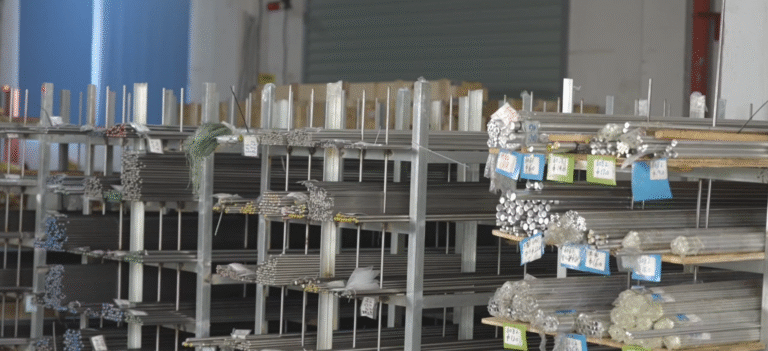I faced a headache when a customer doubted our fastener's certificate—this shakes trust and delays delivery.
These issues can break supply chains: misread certificates, wrong material grades, and missing traceability—let’s fix each one.
Doubts slow orders and drain trust. Each issue erodes confidence. Let’s tackle them head-on.
What is Certificate 3.1 according to EN 10204?
I saw buyers unsure what “3.1” means. They worry it’s just buzz.
Certificate 3.1 is a material test report, certified by the mill or its authorized rep, matching each batch to EN 10204 standards.
Mill reports look official, but confusion stays if customers don’t know the exact standard.
I explain that EN 10204 has four types of certificates:
| Certificate Type | Issuer | Detail Provided |
|---|---|---|
| 2.1 | Manufacturer | Declaration of conformity only |
| 2.2 | Manufacturer | Internal test results, no third-party oversight |
| 3.1 | Mill/Authorized | Independent test, signed by mill or rep |
| 3.2 | Mill + Inspector | Third-party verified by client-nominated inspector |
Certificate 3.1 gives trust. It ensures:
- Material tests are accurate.
- Results match actual batch.
- Signed by someone responsible.
I note for buyers like Oliver from Germany: misunderstanding certificates leads to wasted time and improper sourcing. I advise checking which certificate type is needed before ordering.
What is a mill test report EN 10204?
I once had a client ask if a “mill test report” was the same as a 3.1 certificate. They saw them as two things.
A mill test report is the broad document that shows material chemical and mechanical properties against standards—it can be Certificate 3.1 if it meets EN 10204 conditions.
The report includes:
- Batch number
- Melt number
- Chemical analysis
- Mechanical results
- Heat treatment details
Many buyers don’t know to read batch numbers. I say: look at headers first. These give clues to traceability.
Then I go deeper:
Here are key parts on the mill test report:
- Batch/Melt number links to production heat.
- Chemical composition confirms alloy type.
- Mechanical tests include tensile strength, yield, elongation.
- Heat treatment record shows thermal process used.
- Certificate signature—must come from mill or authorized rep.
I recommend a simple checklist. I also share a story: I once found mechanical values marked wrongly. Catching that saved a big recall risk.
How to check material test certificate?
I’ve guided many buyers on verifying certificates. Often errors hide in plain sight.
Check the material test certificate in four steps: authenticity, traceability, compliance, and validity—then you reduce risk of wrong or faked supplies.
Let’s break it down:
-
Authenticity
- Does logo match the issuing mill?
- Are stamps and watermarks present?
- Is the signature genuine?
-
Traceability
- Check batch/melt numbers.
- Link them to manufacturing records.
- Ask for mill declaration of origin.
-
Compliance
- Confirm standards like EN, ASTM, or DIN.
- Match chemical/mechanical results to declared grade.
- If fasteners need corrosion resistance, check necessary tests.
-
Validity
- Check dates—are they recent and aligned with order?
- Ensure signed after testing and before delivery.
- Watch for anomalies like reissued certificates.
I share a table of common issues I’ve found:
| Issue | Risk | Quick Solution |
|---|---|---|
| Fake signature | Legal and safety concerns | Ask for notarized version or mill confirm |
| Batch number mismatch | Non‑traceable product | Cross‑check with production data |
| Missing mechanical values | Material wrong for spec | Reject or request retest |
| Outdated certificate date | Tests not for this batch | Ask for updated version |
I also emphasize asking your supplier to send the test certificate early—before production begins. That prevents wasted time.
What is the ASME Material Test Report?
I often ship to North America. So I need to know ASME requirements too. Buyers ask: is EN certificate enough?
An ASME Material Test Report (MTR) is similar to EN 10204 3.1, but follows ASME Sec. II standards and includes ASME stamping when needed.
Despite similarities, there are differences:
- ASME uses Standard II A, B, C categories for MTR content.
- ASME certificates must reference ASME Sec. II, III, or V.
- ASME stamps like “U‑Stamp”, “S‑Stamp” may be required.
- The issuing authority can be the manufacturer’s authorized inspector.
Let me give a quick mapping table:
| Element | EN 10204 3.1 Certificate | ASME MTR |
|---|---|---|
| Standards Referenced | EN standards (e.g., EN 10204) | ASTM, ASME Sec II |
| Issuer | Mill/rep | Manufacturer or authorized inspector |
| Certificate Categories | 2.1, 2.2, 3.1, 3.2 | Standard II A/B/C content classification |
| Stamp Requirement | Not required | U/S/PP/UM–Stamp may be needed |
In one case, a customer from Canada rejected parts—because our EN 3.1 didn’t reference ASME Sec II. We resolved that by using a lab accredited for ASME. That’s saved the deal.
How to check material test certificate?
Check the material test certificate in four steps: authenticity, traceability, compliance, and validity—then you reduce risk of wrong or faked supplies.
I repeat the process but with ASME in mind:
- Authenticity – look for ASME stamps, standard references.
- Traceability – same batch/melt checks apply.
- Compliance – confirm ASTM or ASME Sec II values match order.
- Validity – ensure that certificate was issued post-testing and pre-shipment.
When I guide Oliver, I also teach him to check if there’s an authorized inspector signature—this avoids fake claims.
Conclusion
I know these issues. I solve them with a clear four‑step check, correct certificate types, and traceability systems.
Summary of Solutions
- Know the right certificate type.
- Learn to read mill reports.
- Use my four‑step check.
- Understand ASME vs EN differences.
This approach prevents delays, builds trust, and keeps supply chains smooth. Choose confidence, clarity, and control.


